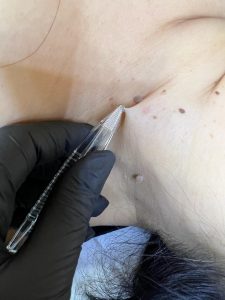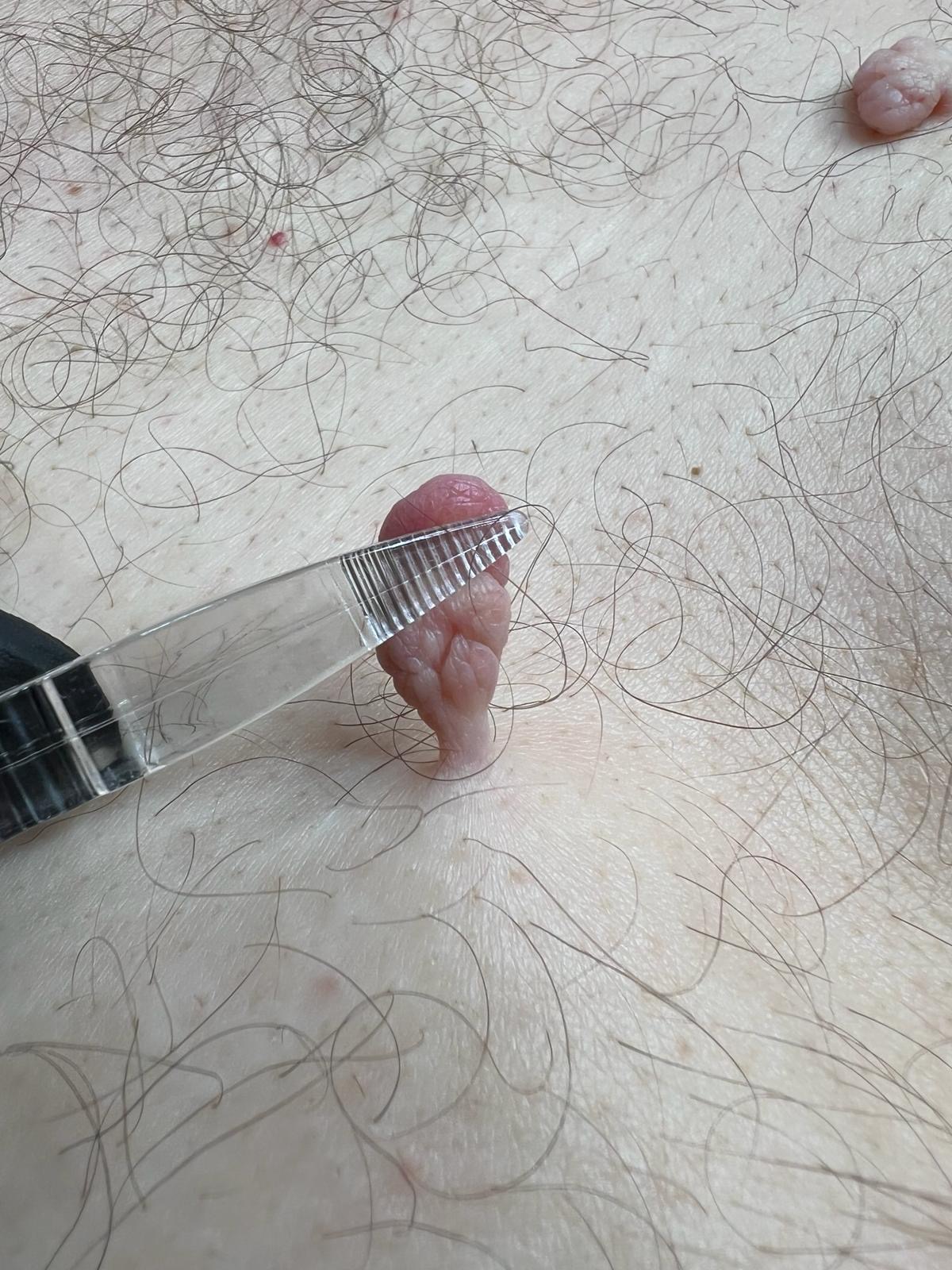Skin Tags which can medically be known as fibroepithelial polyps, are often small but sometimes become rather large, soft, benign growths.
They are made up of loose collagen fibers and blood vessels which are surrounded by a thin layer of skin. They generally tend to be flesh-colored although can also appear slightly darker and hugely vary in size, starting as a tiny pin prick attachment.
They are often found in areas where the skin rubs either against itself or on clothing such as a collar around the neck, underarms, groin, and I see many around the eyes. They are extremely common in adults and tend to increase with age and also weight gain.
They are harmless and generally painless although they can sometimes become irritated or inflamed if they are being caught or rubbed on a regular basis. They may bleed or become painful if this is the case.
I remove skin tags for both cosmetic purposes and/or if they are causing discomfort.
It is essential to see a professional for removal as attempting to remove them at home via a number of different methods such as tying string around them or applying a homemade lotion can lead to infection or scarring.
Why do we get them?
The exact cause is not fully understood, but we know that there are several factors that play a part in them:
Friction: Skin tags often occur in areas where the skin rubs against itself or clothing.
Genetics: There may be a genetic predisposition to developing skin tags. If your parents or other family members have them, you may be more likely to develop them as well. I see this regularly within families I treat.
Hormonal changes: Fluctuations in hormone levels. Many Skin Tags tend to occur during pregnancy or the menopause.
Obesity: Overweight or obese clients are more likely to develop skin tags. This is more than likely due to friction within the skin folds.
Age: Skin tags tend to become more common as people age. It is only occasionally I will see or need to treat one on a child.


